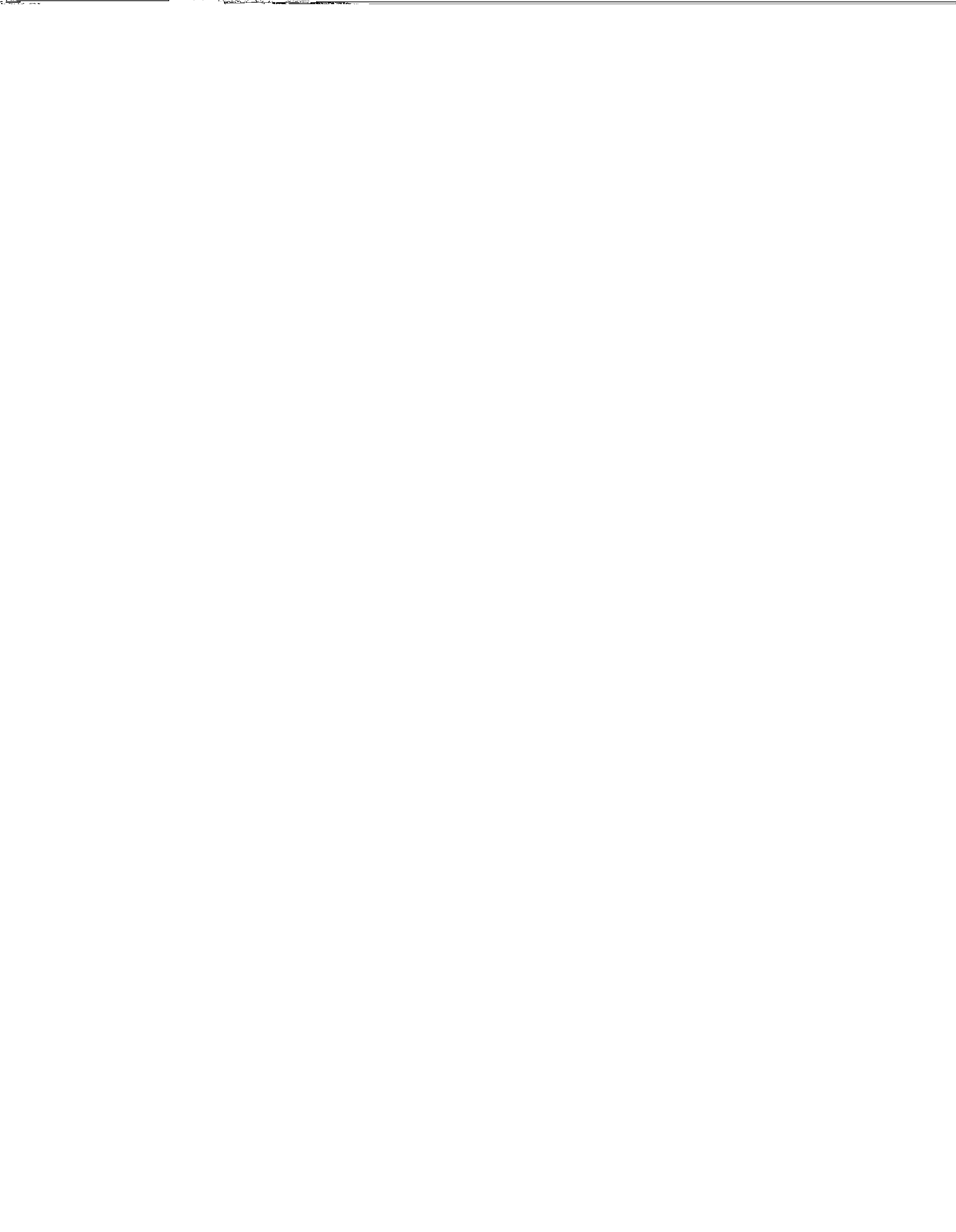RECE~VED
CLERK’S OFFICE
FEB
1 ~ 2004
STATE OF ILLINOIS
Pollution Control Boarc~
OFFICE
OF THE ATTORNEY GENERAL
STATE OF
ILLINOIS
Lisa Madigan
A~FORNEY
GENERAL
February 11,2004
The Honorable
Dorothy Gunn
Illinois
Pollution Control Board
State of Illinois Center
100
West Randolph
Chicago,
Illinois 60601
Re:
People
v.
The Highlands,
LLC.,
et a!.
PCB
No. 00-1 04
Dear Clerk Gunn:
Enclosed for filing please find the original and ten copies of a NOTICE OF FILING,
MOTION
FOR
LEAVE TO AMEND COMPLAINT
and
SECOND
AMENDED
COMPLAINT
in
regard
to the
above-captioned matter.
Please file the original
and
return
a file-stamped copy of the document
to our office
in
the enclosed
self-addressed,
stamped
envelope.
Thank you for your cooperation
and consideration.
Very truly yours,
~
~s~—
-c
“Jane
E.
McBride
Environmental Bureau
500
South
Second Street
Springfield,
Illinois
62706
(217)
782-9031
J EM/pp
Enclosures
500 South Second
Street, Springfield,
Illinois
62706
•
(217)
782-1090
•
YTY:
(217) 785-2771
•
Fax:
(217) 782-7046
100
\Vest
Randolph Street, Chicago,
Illinois
60601
•
(312)
814-3000
•
T’l’Y: (312)
814-3374
•
Fax:
(312) 814-3806
1001
East Main,
Carbondule,
Illinois
62901
•
(618) 329-6400
•
TTY:
(618) 529-6403
•
Fax:
(618) 529-6416
~C~VE~
CLERK’S OFFICE
BEFORE THE ILLINOIS POLLUTION
CONTROL BOARD
FEB
1~2QO4
PEOPLE OF THE STATE OF ILLINOIS,
)
STATE OF ILLINOIS
Complainant,
)
POllUtIOn Control Board
v.
)
PCB NO.
00-1 04
)
(Enforcement)
THE HIGHLANDS, LLC,
an Illinois limited
)
liability corporation,
MURPHY FARMS, INC.,
)
(a division
of MURPHY-BROWN, LLC,
a
)
North Carolina
limited liability corporation,
)
and SMITHFIELD FOODS,
INC.,
a Virginia
corporation)
Respondents.
NOTICE
OF FILING
To:
Mr. Jeffery W. Tock
Mr.
Charles M.
Gering,
Esq.
Harrington, Tock
& Royse
McDermott, Will
& Emery
201
W. Springfield Ave.
227 West Monroe Street
P.O. Box 1550
Chicago,
IL 60606-5096
Champaign,
IL
61824-1500
-
PLEASE TAKE
NOTICE that on this
date
I
mailed for filing with the Clerk of
the Pollution
Control
Board
of the
State
of Illinois,
a
MOTION
FOR
LEAVE TO AMEND
COMPLAINT
and a
SECOND AMENDED COMPLAINT, a copy of which is attached hereto and herewith served-upon
you.
Respectfully submitted,
PEOPLE OF THE
STATE OF ILLINOIS
LISA MADIGAN
Attorney General
of the
State of
Illinois
MATTHEW
J.
DUNN, Chief
Environmental Enforcement/Asbestos
Litigation
Division
BY:
~
2
~
C
,-~
JANE McBRIDE
Assistant Attorney General
Environmental
Bureau
500 South
Second
Street
Springfield,
Illinois 62706
217/782-9031
Dated:
February 11, 2004
CERTIFICATE OF SERVICE
I
hereby certify that
I
did
on
February 11, 2004,
send by First Class Mail, with postage
thereon fully prepaid, by depositing
in a
United States
Post Office Box a true and
correct copy
of the following
instruments entitled
NOTICE
OF FILING,
MOTION
FOR LEAVE TO AMEND
COMPLAINT and
SECOND AMENDED
COMPLAINT
To:
Mr.
Jeffery W. Tock
Mr. Charles
M.
Gering,
Esq.
Harrington, Tock
& Royse
McDermott,
Will
&
Emery
201
W. Springfield Ave.
227 West Monroe Street
P.O.
Box 1550
Chicago,
IL 60606-5096
Champaign,
IL
61824-1500
and the original and ten copies by
First Class
Mail with
postage thereon fully prepaid
of the
same foregoing instrument(s):
To:
Dorothy Gunn, Clerk
Illinois
Pollution Control
Board
State of Illinois Center
Suite
11-500
100 West Randolph
Chicago,
Illinois 60601
A copy was also
sent by First Class
Mail with
postage thereon fully prepaid
To:
Mr.
Brad
Halloran,
Hearing
Officer
Illinois
Pollution Control
Board
State of
Illinois Center,
Ste.
11-500
100
West
Randolph
Chicago,
IL 60601
~
~
~
,~Jafi’e
E.
McBride
Assistant Attorney General
This filing is submitted
on recycled paper
R~C~JVED
CLERK’S OFFICE
BEFORE THE
ILLINOIS POLLUTION
CONTROL BOARD
-
FEB
1~2QQ4
PEOPLE OF THE STATE OF ILLINOIS
)
~
Complainant,
v.
)
PCB No.
00-104
)
(Enforcement)
THE
HIGHLANDS,
LLC,
an
Illinois
limited
)
liability corporation,
and MURPHY
)
FARMS, INC.,
(a division of MURPHY-
)
BROWN, LLC,
a North Carolina limited
)
liability corporation, and
SMITHFIELD
)
FOODS, INC.,
a Virginia corporation).
)
Respondents.
MOTION
FOR LEAVE TO AMEND COMPLAINT
NOW
COMES Complainant,
PEOPLE OF THE
STATE OF ILLINOIS, and
moves for
leave to
supplement and thereby amend the Amended Complaint
in this matter, for the
following
reasons:
1.
On
August 20,
2002,
the Complainant filed an amended
complaint
in this matter.
On October 8,
2002, the amended
complaint was entered
pursuant to
Hearing
Office Order.
2.
On or about June
16, 2003,
Respondent Highlands filed
its answer to
Count
II
of
the amended
complaint and a
motion for partial summary judgment on
Count
I
of the amended
complaint.
On
September 4, 2003,
the Respondent’s
motion for partial summary judgment was
denied
pursuant to
Board Order.
On
or about November
1,
2003,
Respondent Highlands
filed
its answer to
Count
I
of the Amended
Complaint.
3.
Respondent Murphy has received
an agreed extension
of time
in which to file an
answer in this
matter.
4.
Discovery requests
have been
submitted
by all
parties to this matter,
but the
discovery schedule has been stayed so as to
allow the parties
to focus on
settlement
negotiations and review of technical compliance options.
Due
to the stay, the parties
have yet
to answer or respond to any of the discovery requests.
5.
No depositions have been taken in this
matter.
6.
Given
that the discovery schedule
has been stayed
and
no hearing
schedule
has
been
set,
there
is time
and opportunity to conduct additional
discovery based on the
amendment.
7.
Section 2-616(a) of the
Illinois
Code of Civil Procedure 735
ILCS 5/2-616(a),
provides,
in pertinent
part:
Amendments.
(A) At any time before final judgment, amendments
may be
allowed
on just and
reasonable terms,
introducing any party who ought to have
beenjoined as plaintiff or defendant,
dismissing any party,
changing the cause of
action or defense or adding
new cause of action or defenses,
and
in any
matter,
either of form or substance, in any process,
pleading,
bill of particulars or
proceedings, which may enable
the plaintiff
to sustain the claim for which
it was
intended
to
be
brought or the defendant to make
a defense or assert a cross
claim.
Addition
of the proposed amendment allows the Complainant to
include
all outstanding claims
and causes
of action alleging violation
of the
Illinois Environmental
Protection
Act and
regulations promulgated thereunder against
Respondents Highlands and
Murphy within this
single matter.
8.
On November
18,
2003,
Illinois EPA inspectors observed
ponding of wastewater
in
an wastewater application field.
The ponding was
the result of leaks
in the wastewater
application equipment.
Land application
(irrigation) of swine wastewater had occurred from the
Highlands swine waste
lagoons to Respondent Highlands’
irrigation field on
November 17,
2003.
9.
At the time of the November 18,
2003 site visit, the Illinois EPA inspector
observed a reddish
colored discharge with
foam coming from an 8-inch diameter PVC pipe at a
concrete drop
box structure
located
about 3/8 of a mile northeast
of the swine farm.
Depth
of
flow in the PVC pipe was about 2 inches.
The discharge from the PVC pipe drains east
2
beneath a
road
and enters an
unnamed tributary to
French
Creek.
The PVC pipe discharges
from
a field tile that, per Respondent Highlands,
is connected to a field
tile that runs
on the
south side
of Township
Road 1100
N
immediately
in front of the swine facility.
This field tile is
located
in
proximity to
where wastewater was
ponded at
the time of the November
18, 2003 site
visit due to
the leak
in the irrigation equipment.
10.
Sample results
from the ponded wastewater at the location of the
leak
in the 6-
inch
supply line indicated
the following parameter levels:
31
mg/L ammonia,
60
mg/L BOO,
and
592
mg/L total suspended
solids.
Sample results from the discharge at the concrete
drop box
indicated the following parameter levels:
1.5 mg/L ammonia,
11
mg/L BOD,
19
mg/L total
suspended solids
and
3000 fecal
coliform/100
ml.
11.
Complainant seeks to amend the complaint so as to
include allegations that the
discharge
was a violation of the water pollution provisions of the
Illinois Environmental
Protection Act and the Board’s agricultural related pollution regulations.
12.
A Second Amended
Complaint
is being submitted
in
conjunction and
simultaneously with
this Motion,
to
provide Respondents with
notice of the amendment
in full
and for filing upon
Board
order granting this
Motion.
WHEREFORE, Plaintiff respectfully requests that this Motion for Leave to Amend
the
3
Amended
Complaint be granted and that the Second Amended
Complaint be filed upon entry of
the Board’s order granting
leave.
Respectfully submitted,
PEOPLE
OF THE STATE OF
ILLINOIS,
ex reL
LISA MADIGAN,
Attorney General
of the State of Illinois
MATTHEW
J.
DUNN, Chief
Environmental
Enforcement Division
BY:
)~
JANE E.MCBRIDE
Assistant Attorney General
500
South
Second Street
Springfield, Illinois
62706
(217) 782-9031
4
-
RECE~VED
CLERK’S OFFICE
BEFORE THE ILLINOIS POLLUTION CONTROL BOARD
FEB
182004
STATE OF ILLINOIS
PEOPLE OF THE
STATE OF ILLINOIS
)
Pollution
Control Board
)
Complainant,
V.
)
PCB No.
00-104
)
(Enforcement)
THE
HIGHLANDS, LLC,
an
Illinois
limited
)
liability corporation,
and
MURPHY
)
FARMS, INC., (a division of
MURPHY-
)
BROWN, LLC, a North Carolina limited
)
liability
corporation,
and SMITHFIELD
)
FOODS,
INC., a Virginia
corporation).
)
Respondents.
SECOND
AMENDED COMPLAINT
-
-
The PEOPLE
OF THE
STATE OF ILLINOIS,
by
Lisa Madigan, Attorney General of the
State of Illinois, complain
of Respondents THE
HIGHLANDS,
LLC,
and
MURPHY FARMS,
INC., as follows:
-
COUNT
I
AIR POLLUTION
-
ODOR VIOLATIONS
1.
This Count
is
brought on behalf of the People of the State of Illinois,
by
Lisa
Madigan, Attorney General of the State
of Illinois,
on
her own
motion and
at the request of the
Illinois Environmental
Protection Agency (“Illinois
EPA”),
pursuant to
Sections 42(d) and
(e) of
the Illinois
Environmental Protection Act (“Act”), 415 ILCS 5/42(d),
(e)
(1998).
2.
The Illinois
EPA is an agency of the State of Illinois
created
by the General
Assembly
in Section
4 of the Act, 415
ILCS
5/4(1998),
and which is charged, ~itera~a,with the
duty of enforcing the Act.
3.
This Count is brought pursuant to
Section 31
of the Act, 415
ILCS 5/31
(1998),
/
after providing the Respondents The Highlands,
LLC and
Murphy Farms,
Inc. with
notice
and
the opportunity to meet with the
Illinois EPA.
4.
Respondent The Highlands,
LLC (“Highlands”) is a
limited
liability corporation,
registered and
in
good standing
in the
State of Illinois.
Highlands
is a member-managed
LLC.
The members
of the
LLC are
Douglas
B.
Baird,
1124 Knox Highway 18, Williamsfield,
Illinois
61489; James
R.
Baird,
2218 Knox Road
lOON, Yates
City,
IL
61572; and
Patricia A.
Baird,
2218 Knox Road
lOON,
Yates
City,
IL
61572.
The registered
agent is John
J.
Hattery,
Suite
402,
Hill Arcade,
Galesburg,
IL
61401.
5.
At the time of filing of this Amended Complaint, the status of Murphy Farms,
Inc.,
in
the
State of
Illinois, as of January
2,
2002,
is that of a revoked
corporation.
The corporation
failed
to
file its annual
report.
At the time of filing of the original
Complaint in this
matter,
Respondent Murphy Farms,
Inc., a/k/a
Murphy Family
Farms (“Murphy”),
was a
North Carolina
corporation
registered
to do
business
in the State of Illinois ingbbd standing.
The registered
agent,
at
the timing of the filing of the original complaint, was
Gerald W.
Shea, 547
S.
LaGrange
Rd.,
LaGrange,
IL 60525.
Some time later, the registered agent became Charles
Gehring,
Esq.,
McDermott, Will
&
Emery,
227 West Monroe Street,
Chicago,
Illinois
60606-
5096.
Since the time of filing of the original
Complaint
in this matter,
Murphy
Farms,
Inc.
has
been acquired
by Smithfield
Foods,
Inc.
of Smithfield, Virginia.
Murphy
Farms,
Inc.,
is
now a
division of Murphy-Brown,
LLC which is the
hog
production group for and a division
of
Smithfield
Foods,
Inc.
Murphy-Brown,
LLC is located at 2822
Highway 24 West, Warsaw,
North Carolina 28398.
6.
Respondents
Highlands
and
Murphy own
and operate a swine facility located
just south of Williamsfield
in the NE
1/4,
Section
10,
T.1ON, R.4E,
Elba
Township, Knox County,
2
Illinois (the “facility”).
The facility’s offices
are located at
1122
Knox Highway 18, Williamsfield,
IL 61489.
7.
Upon information and
belief,
Respondent Highlands
owns and operates
the
property and
buildings and shares
in the operation of the wastewater treatment facility,
and
provides labor for operation of the facility.
-
8.
Upon information and
belief,
Respondent Murphy owns
all of the
hogs at the
facility, owns and
provides all feed, owns
and
provides all
medication, owns and
provides
anything
else that goes
in
and on
the
hogs such
as syringe needles and
marking
sticks,
provides for the transportation of
all
hogs,
provides for veterinary services for the
hogs, trains
the facility’s employees and
otherwise shares
in the direct control
and management of the
operation
with
Respondent Highlands.
All
hog excrement that is deposited and
stored
at the
--
facility comesfromhogsowned by Respondent Murphy.
9.
Upon information and
belief,
Respondent Murphy
knew of and was
involved
in
the
siting
of the facility at
its existing location.
10.
The facility is a 3,650
sow farrow-to-wean
operation, comprised of a gestation
building, breeding building, a farrowing
building,
a
nursery and a finishing building.
11.
Upon information and
belief, at the time of siting
and
construction of the facility,
Respondent Murphy knew what the capacity
and size of the operation was to
be and
has since
supplied the 3,650 sows
necessary to meet the design
capacity of this facility and
keep it fully
operational.
12.
At the time of the filing of the original Complaint in
this matter,
the livestock
waste
management system
being
utilized at the facility was
a multiple lagoon system designed
and,
upon information and
belief,
operated
by Bion
Technologies,
Inc. (“Bion”),
a Colorado
corporation.
Swine waste and wastewater generated
in
the buildings was collected
in
16-inch
deep
pits under the buildings.
The building pits were drained
into the lagoon
system.
There
3
were four lagoons
in
the system that were operated
in series.
The-third
lagoon was divided into
two
cells by
a synthetic curtain
partition.
The system
utilized foi.ir sur~acè
aerators.—-There were
two
five horsepower aerators
in the first lagoon, one five horsepower aerator
in the first cell of
the third
lagoon and
one three horsepower aerator
in the second
cell of the third
lagoon.
Some
of the swine wastewater from the first cell
of the third lagoon was
recycled
to the buildings
as
pit
recharge water.
Wastewater in the third
and fourth
lagoon was land
applied via a traveling gun
irrigation
unit.
According to
Bion, swine waste
solid sludge that accumulated
in the second
lagoon was to
be
periodically land
applied.
13.
According
to descriptions and explanations provided
by
Bion, the aerated and
non-aerated zones of
its
multiple cell
lagoon
system were designed to
promote
a dense
facultative biological
environment that minimizes anaerobic volatization of nitrogen,
maximizes
nutrient-settling
in the. solids, and. maximizes
output as
nitrogen
gas when volatization occurred.
Bion
contended
the system was managed
by manipulating
conditions to
promote
the evolution
of the microbial
mix, so that an
ideal
microbial balance would
be achieved
that would
maximize
nutrient assimilation
in the solids and
liquid waste that will eventually be land
applied.
Once the
desired-microbial
balance was achieved, according
to
Bion,
the system is supposed
to provide
adequate
odor control due to the fact that the system
is properly balanced and operating
at full
potential.
14.
In
order
to achieve odor control,
upon information
and
belief,
the
Bion
multiple
lagoon
system
in existence at the facility at the time of the filing of the original
Complaint,
according
to
claims made by
Bion, was
either to
be
manually adjusted
by
Bion
personnel and
Highlands personnel or able to adjust itself via
its “dense facultative
biological
environment” to
accommodate variations in the farm operational
procedures,
unexpected failures or fluctuations
in farm procedures, and
variations in
climatic and weather conditions throughout the year.
4
15.
Upon information and belief,
Respondent Murphy was
involved in the selection of
the Bion system
as the means of
handling and treating
swine waste at the facility.
16.
Shortly after the filing of the original
Complaint
in this matter,
Bion withdrew from
its contractual
obligations at the Highlands’ facility.
17.
In April 2000,
Respondents Highlands and
Murphy began
to
convert the
Highland facility’s
lagoon system
to a
BioSun system.
The BioSun system
utilizes the two
large
lagoons of the original lagoon
series.
The two small lagoons that served
as the entry point for
the waste stream
in the
Bion
system, were taken out of operation but have-never been cleaned
out and
properly closed.
18.
Upon information and
belief,
construction of the facility began
in the fall of 1997.
19.
Sows were first brought
into the facility on
December 21,
1997,
at which time
operations commenced at.the..facil.ity
- ....
~
20.
Livestock waste was first diverted
to the multiple lagoon system
on December
28,
1997.
At that time,
the four lagoons
had been constructed and
the majority of the transfer
piping had
been
installed.
21.
Sows first farrowed at
the facility on
May
11,
1998.
22.
On June
2,
1998,
a majority
of the swine confinement buildings had
been
constructed,
and
construction was underway
on
finishing
and
nursery buildings.
Initial
earthwork for a second
farrowing
building
was completed
on June
2,
1998.
The second
farrowing
building, at the time of the filing of this complaint,
has not been constructed.
23.
The Illinois Department
of Agriculture issued a
Final
Notice of
Lagoon
Registration
and Certification
of Completion to
Highlands on August
3,
1998.
24.
Section 3.02 of the Act, 415
IICS 5/3.02 (1998),
states:
“AIR
POLLUTION”
is the presence in the atmosphere of one or more
contaminants in sufficient quantities and of such
characteristics and
duration as
5
to
be injurious to
human,
plant, or animal
life,
to
health, or to property, or to
unreasonably interfere with the enjoyment of life or property.
25.
Section
3.06 of the Act, 415
ILCS 5/3.06
(1998),
states:
“CONTAMINANT” is any solid,
liquid, or gaseous
matter, any odor, or any form
of energy,
from whatever source.
26.
Section
9(a) of the Act, 415
ILCS 5/9(a) (1998),
provides,
in
pertinent part,
as
follows:
No person shall
a)
Cause or threaten
or allow the discharge or emission
of any contaminant
into the environment
in any State so as
to
cause or tend to cause
air
pollution
in
Illinois, either alone
or
in combination-with contaminants from
other sources,
or so as
to violate regulations
or standards adopted
by the
Board under this Act;
27.
Section .5Ot4O2(c)~3)c.fthe
Board’s.Agri.culture
Related Pollution
Regulations,
35
III. Adm.
Code
501 .402(c)(3)
(1998), provides,
in pertinent part,
as
follows:
Location of New Livestock
Management Facilities and
New Livestock Waste-Handling
Facilities
c)
3)
Adequate
odor control
methods and technology shall
be
practiced by
operators of new and existing livestock management facilities
and
livestock waste-handling facilities so as not to cause
air pollution.
28.
On numerous occasions,
beginning
in January 1998
and continuing through the
present,
the Respondents
have caused
or allowed the emission of offensive
hog
odors from the
facility.
These
odors have
unreasonably interfered with
the enjoyment of life
and property
by
neighboring residents by preventing or disrupting outdoor activities
and
by invading or
penetrating
their homes and
vehicles causing
physical discomfort,
including
in some cases
gagging,
nauseousness,
sore
and/or burning
nose and throat,
and
headache.
Such physical
discomfort has
also included the physical and emotional
revulsion an
individual
might
experience when subjected
to
highly offensive odors.
6
29.
A neighbor who lives approximately 1/4 mile from the facility is asthmatic.
Her
doctor has written a letter indicating any further expansion of the Highlands confinement
operation would
cause the patient further discomfort.
In the letter the doctor acknowledges
that
allergens such as substances that may be coming from the confinement trigger her extreme
asthmatic reactions.
30.
All of the neighbor complainants impacted
by the offensive
odors lived
on their
property prior to construction of the facility.
A tornado struck the area on July 29,
1998.
One of
the complainant families did
not rebuild
their home at its former location
because odors from
the facility
had so substantially interfered with the
use and
enjoyment of that
property that the
family decided
to
rebuild
elsewhere.
The family suffered a financial loss
in
choosing
not to
rebuild
at the original
location
near the Highlands swine farm.
31.
Between the months of January
1998 and December
19~B,.theilIinoisEPA
received approximately 110
complaints of odor coming from the facility submitted
by neighbors
of the facility.
The following
indicates how many days
per month
neighbors experienced
unreasonably
offensive odors coming from the facility
between the months of January 1998 and
December
1998:
January,
1
day;
March,
3 days; April,
8 days;
May,
11
days; June,
20 days;
July,
11
days; August,
15
days;
September,
14 days;
October, 6
days; November, 9 days;
December, 13 days.
Collection
and recording
of the
1998 data was disrupted
by
the
occurrence of and
destruction caused
by the tornado that moved
through the area on July 29,
1998.
Between the months of January
1999 and November 1999,
the
Illinois EPA received
approximately
120 complaints of odor coming
from the facility submitted
by neighbors of the
facility.
The following
indicates
how many days
per month
two complainants
experienced
unreasonably offensive
odors from
the facility between the months of January 1999 and
November 1999: January,
3 days;
February,
6 days;
March, 4
days; April,
12 days;
May,
10
7
days; June,
14
days; July,
15 days; August,
17 days;September,
13 days;
October, l3d~ys;
-
iNovember,
14 days.
32.
The home of one of the complainants is located
1/4 mile from
the facility.
Other
complainants homes
are located approximately
1
mile from the facility.
Despite regulatory
setback requirements of at
least
1/4 to
1/2 mile,
research
has shown that,
on
a case-by-case
basis, separation distances greater than
1/2 mile,
and
in some cases
up to
1
mile, are
more
appropriate for large
livestock facilities.
In
certain
instances, even a I
mile separation
distance
is
not sufficient.
33.
On
September 4,
1996,
the
Illinois
EPA sent a letter to
Mr.
Doug
Lenhart,
Director of Illinois Operations for Murphy
Family Farms,
in
response to his inquiries regarding
the siting of a new swine production facility near
Elmwood,
Illinois.
The Illinois EPA cited the
Title 35, Subtitle
E setback provisions, in the ietie.r and
included, a st*ment that compliance..
with
these siting
provisions
affords no protection from
possible enforcement action
if the
livestock operation
causes
air pollution
in violation of Section 9(a) of the Illinois
Environmental
Protection Act.
The letter further stated that the description of the
new facility provided by Mr.
Lenhart indicated
that a potential for possible odor problems does exist due to
the magnitude of
the operation and
therefore careful consideration should
be given
to
location, waste
management and
odor control
methods.
34.
On
May 20,
1997,
the
Illinois
EPA sent a letter to James
Baird with regard
to a
new swine facility
Mr.
Baird planned
on
constructing near Williamsfield, which eventually was
constructed
as
the Highlands and
Murphy facility.
The Illinois
EPA cited the Title 35,
Subtitle
E
setback provisions
in the letter and
included a statement that
compliance with these siting
provisions affords no protection from
possible enforcement action
if the livestock operation
causes
air pollution
in violation
of Section
9(a) of the Illinois Environmental Protection Act.
The
letter further stated that the description
provided
by Mr.
Baird of the new facility indicated that a
8
potential for possible odor problems does exist due to
the magnitude
of the operation and
therefore
careful consideration should
be given to
location, waste
management
and odor
control methods.
The May 20,
1997 letter further stated that the Illinois EPA had
been involved
with
situations where offensive odors were reportedly dc-tee-ted two to three
miles from swine
production and/or waste handling facilities
and, therefore,
the Illinois
EPA recommends locating
larger livestock facilities at greater setback distances than the minimum distances.
35.
On April
23,
1998,
the
Illinois EPA inspected
the facility in
response to
livestock
odor complaints from citizens who lived between
1/4 of a mile to
1
1/2
miles away from the
facility.
36.
At the time of the April 23,
1998 inspection,
Douglas Baird
confirmed that a
strong swine waste odor had
been
produced during the start-up period for the facility’s system.
Mr.
Baird informed
the inspector that the start-up of the treatment system would
not be
completed
until all lagoons
in
the multiple lagoon
system
reached
their design operating
level.
37.
On
April 23,
1998,
the Illinois EPA inspector experienced a
strong
swine waste
odor near the lagoon system
during the inspection.
38.
On
May 29,
1998,
the
Illinois
EPA issued a Noncompliance Advisory. Letter to.
.-
-
Highlands.
The letter
cited apparent violations
of Section 9(a)
of the Act, 415 ILCS 5/9(a),
general
prohibition against air pollution,
and 35
III.
Adm.
Code 501 .4O2(c)(3), failure
to employ
adequate odor control
methods
and technology.
39.
On
June
2,
1998,
the facility was
again
inspected
by the Illinois
EPA.
The
inspector experienced a swine waste odor near the
lagoon
system and
along
a stream basin
just downwind
of the facility.
40.
During the June
2,
1998 inspection,
Douglas
Baird again indicated
that the odors
would
be addressed
when the
Bion
biological treatment system was
completed.
On June
2,
1998, the majority of the components in the system
had
been
installed and
the system was
9
operational.
The multiple
lagoons were very close
to their design
operating
level and three of
the four floating surface aerators planned for the system were installed.
The floating
baffle
between the two components of the third
lagoon
was being
installed at the time of the
inspection.
41.
In
his report for the June
2,
1998 inspection, the Illinois
EPA inspector indicated
that the addition of the fourth aerator in
the third
lagoon
may not prove sufficient to
provide
necessary odor control.
The inspector also stated
in his
report that the first and second
lagoon
may have to
be covered
and the three
influent line inlets
into the first lagoon submerged
to
obtain further odor control.
He
also recommended
that odors
produced by
the confinement
building ventilation system
be
monitored.
42.
On June
8,
1998,
Douglas
Baird sent a letter to the Illinois
EPA in
response to
the noncompliance advisory letter.
On June
17,
1998,
the
Illinois
EPA responded to M~
Baird’s
letter of June
8,
1998,
and
indicated that Mr.
Baird’s response did not sufficiently address the
apparent violations
because
it failed
to
provide a timetable for completing action(s)
necessary to
eliminate offensive odor
emissions.
43.
On June
12,
1998,
the
Illinois
EPA conducted
another inspection
of the facility in
response to
continuing odor complaints from
neighbors
of the facility.
At the time of the
inspection, approximately 3,650 sows were on site at the facility.
44.
At the time of the June
12,
1998 inspection, the inspector experienced
a very
strong swine waste odor downwind
of the facility at the Roy Kell
residence,
approximately 1/4
mile from the facility.
The odor was present even
though the Bion system was operational.
45.
At
the time of the June
12,
1998 inspection,
Roy
Kell
indicated
the odor was
present
most of the time at
his home,
since his home
is located just east of the facility and the
prevailing
winds are out of the southwest.
10
46.
On June
17,
1998,
the Illinois EPA conducted another inspection of the facility.
At the time of the inspection,
approximately 3,650 sows were on site at the facility.
47.
During the June
17,
1998 inspection, the inspector experienced swine waste
odor approximately I
1/4 mile downwind
north of the facility
along
County Highway
11
(1200N).
At the time this odor was experienced, the facility’s
Bion system was operational.
48.
During the June
17,
1998
inspection, the inspector experienced
a strong
odor on
the site of the facility around the confinement buildings and the waste
treatment system.
49.
On June
25,
1998,
the
Illinois
EPA conducted another inspection of the facility in
response to
continuing odor complaints from
neighbors of the facility.
At about 2:00
P.M.
on
the date of this inspection,
the inspector experienced
a strong
and offensive swine facility
odor
while
on
County
Highway 11(1200
N) near Township Road
2200E.
The wind was out of the
south-southwest at that time.
The said
location
is approximately 11/4 mile northeast of the
facility.
--
‘
50.
At
approximately 2:30 P.M.
on
June 25,
1998,
the inspector returned to
the same
location
where
he experienced strong
swine facility odor at 2:00
P.M.
on that date.
He
again
experienced
a strong
and offensive
swine facility odor
at the location.
A
distinct odor was
present
in a relatively narrow band a few hundred yards wide along
County Highway
11
near
Township Road 2200E.
The facility was determined to
be the source of the offensive swine
facility odors
at the said
location at 2:00
P.M.
and 2:30
P.M.
51.
At the time of the inspection on June 25,
1998,
no swine facility odor was
detected while on the upwind side of the facility.
52.
On July
14,
1998, the
Illinois
EPA sent Highlands
and
Murphy a Violation Notice
pursuant to Section
31 (a)(l) of the Act, 415
ILCS 5/31 (a)(1).
The notice
cited
apparent
violations of Section
9(a) of the Act, 415
ILCS 5/9(a),
and 35
III.
Adm.
Code 501 .4O2(c)(3).
11
53.
On July 29,
1999,
Respondent Murphy sent the Illinois
EPA a letter in
response
to the July 14,
1998 Violation Notice denying
ownership in or management responsibility for the
facility.
54.
On August 28,
1998, the Illinois
EPA rejected
Respondents
Murphy’s response
dated July 29, 1999 as an acceptable
Compliance Commitment Agreement (“CCA”) on the
basis that the response failed to
commit to any corrective actions
to
address the odor violations.
55.
On
September 4,
1998,
Respondent Murphy,
by its counsel,
Reef C.
Ivey
II,
representing
Murphy Family Farms of North
Carolina, addressed
a letter to the
Illinois
EPA
wherein
it was stated that Murphy’s response of July 29,
1998 was not
a proposed
CCA,
and
that
Murphy could
not have
violated any statutes
or regulations
in
Illinois because it did
not own
or operate
a swine confinement facility in
Illinois.
The letter further stated that although Murphy
believed it unnecessary for it to
appear at a
meeting with the Illinois
EPA,
Ft was
requesting the
--
-
.
--
opportunity for its
representative to
attend a
scheduled meeting between
Highlands and the
Illinois’ EPA.
56.
On September
11,
1998,
the
Illinois
EPA met with
Highlands and
Murphy
pursuant to the requirements of Section 31(a) of the Act, 415 ILCS
5/31(a).
A representative
of
Bion also attended the meeting.
57.
On October 1,
1998, the
Illinois EPA received a letter dated
September 30,
1998, from
Highlands that contained
a proposed
CCA.
In
its September 30,
1998 letter,
Respondent Highlands represented that the
Bion system fully “came on
line” June 29,
1998
and
would
require
additional time to
maximize its efficiency.
58.
On
October 28,
1998,
the Illinois EPA rejected
Respondent Murphy’s October 1,
1 998 response
on the basis that it did not provide any additional
information for reconsideration.
59.
On October 28,
1998, the Illinois
EPA rejected
Respondent Highlands’ proposed
CCA on the basis that scheduled and proposed
odor control
measures
appeared to
be
12
inadequate to
remedy the odor problem.
Further, the Illinois
EPA indicated that even
though
additional odor control
measures may be
identified
as
a result of a scheduled on-site evaluation
by manure/nutrient management consultant Leonard
Meador, the CCA failed
to
provide any
specifics as to what and when
additional
odor control
measures would
be implemented
as a
result of the evaluation.
60.
On
November 30,
1998,
the Illinois EPA received a letter dated
November 25,
1998 from Respondent Highlands that included implementation
schedules for odor control
measures recommended as the result of the on-site evaluation performed
by Leonard
Meador,
with
a request that the
said schedules would
be considered as a newly proposed
CCA.
61.
On
December 22,
1998,
the
Illinois
EPA conducted
another inspection of the
facility.
During the inspection
wastewater samples were collected
from six locations in
the
lagoon system
and the general
condition
of each
lagoon was observed.
Dissolved oxygen
measurements and
temperature readings were taken from
each of the four lagoons.
The
sample
results
indicated thatthe first three
lagoons of the system were
in an
anaerobic state.
62.
At the time of the December 22,
1998 inspection,
the inspector observed
that at
an
inlet pipe to the first cell which directs
swine waste from the breeding/farrowing
buildings, the
pipe was discharging
a dark colored, turbid liquid
with a very strong
swine waste odor.
At the
time of the sampling,
Douglas Baird
indicated that pressure washing was occurring
in the
farrowing
unit and therefore the sample collected was not necessarily
representative of the
normally concentrated
wastewater.
63.
At the time of the December 22,
1998 inspection,
the first lagoon
of the system
contained turbid
liquid that had a very strong swine waste
odor.
A 2-inch frozen
manure crust
existed
over the surface of the lagoon except in the vicinity
of the two surface aerators
and the
inlet pipes.
Laboratory analysis of a sample taken from the first lagoon
in the system indicated
2430 milligrams per liter (“mg/I”) biochemical
oxygen demand
(“BOO”)
and 712
mg/I ammonia.
13
64.
At
the time of the December 22, 1998 inspection, the second
lagoon
in
the
system contained wastewater that was very turbid
and had
a distinct reddish color and a very
strong swine waste odor.
Laboratory data from a sample taken
in the second
lagoon
revealed
a
BOO level of 1,090
mg/I and 484 mg/I
ammonia-nitrogen.
65.
At the time of the December 22,
1998 inspection,
the first cell of the third
lagoon
contained wastewater that was very turbid,
had
a reddish color and
had a very strong swine
waste odor.
66.
At the time of the
December 22,
1998 inspection,
wastewater in the second
cell
of the third
lagoon was
very turbid, reddish
in
color and
had a very strong
swine waste odor.
67.
It is the wastewater from the third
lagoon, which on the date
of the December 22,
1998 inspection
had
a very strong
swine waste odor, that is recycled back to the confinement
buildings
as flush water.
68.
At the time of the
December 22,
1998 inspection,
the fourth
lagoon
contained
a
2-inch thick ice
cover.
Liquid
in the fourth
lagoon was turbid with
a strong swine waste odor.
69.
At the time of the December 22,
1998 inspection,
the inspector experienced
swine waste
odors at the lagoons
and
he experienced
a strong
swine odor immediately east of
the swine confinement buildings.
Weather conditions on this date were
very cold with
a
temperature of about 5 degrees
Fahrenheit and wind out of the west.
70.
On January 12,
1999,
the
Illinois
EPA issued Respondent Highlands and
Respondent Murphy a Notice of Intent to
Pursue
Legal Action, pursuant to
Section
31(b) of the
Act,
415
ILCS 5/31(b).
71.
On February 4,
1999,
a
meeting was
held pursuant to the requirements of
Section
31(b).
Representatives of Highlands,
Murphy and
Bion Technologies,
Inc. attended
the
meeting.
14
72.
On February 22,
1999,
the
Illinois EPA
received a letter from Mr.
Ivey
representing
Murphy Family
Farms of North C~roIina
dated
February 17,
1999,
that again
indicated that Murphy did
not own or operate a swine confinement facility
in the
State of Illinois,
and
claiming that the State
of Illinois did
not have jurisdiction over Murphy in this
matter.
73.
On
February 22,
1999, the
Illinois EPA received a letter from Respondent
Highlands
dated
February 19,
1999,
stating that the Highlands
was continuing to
investigate
and
consider every technically feasible and economically reasonable
measure to reduce odors
at
the facility.
The Highlands’
letter also called
into
question the validity of the neighbors’
complaints.
74.
On July 30,
1999,
at the invitation of the facility, the
Illinois
EPA performed
a site
inspection of the facility.
During the inspection, wastewater samples were
collected from
six
.
-~..
locations in
the lagoon system
and
the general condition of each
cell was observed.
Wastewater samples were split with
the Respondents.
75.
A strong waste odor was
experienced
at each lagoon.
A strong ammonia
odor
was experienced emanating
from the
lagoon
system.
At the time of the July 30,
1999
inspection, the first three
lagoons
in
the system were anaerobic.
76.
At
the time of the July 30, 1999 site inspection, offensive swine farm and swine
waste lagoon
odors were
experienced downwind of the facility along the east-west road
immediately north
of the facility and along
Township
Road 2200 East
(the north-south gravel
road
immediately northeast of the facility)
(Elba Township).
Township
Road 2200 is the
road
in
front of the
Kell residence.
77.
During the July 30,
1999 site inspection,
odors were detected
within
and around
the confinement
buildings and
downwind
of the lagoons.
The odors were of sufficiently similar
character to those smelled along
Township Road 2200 East to
establish
that the facility is the
source of the observed
offensive
odors.
Weather conditions on
that date, July 30,
1999,
were
15
very hot and
humid with a temperature of approximately 95 degrees
Farhenheit.
A gentle,
variable wind was coming out of the west and southwest.
78.
During
the July 30, 1999 site inspection,
the waste treatment system was in
operation and all of the lagoons were filled to operating
level. The mechanical surface aerators
were
in
operation
in the various lagoons.
Wastewaterfrom the fourth
lagoon was
being applied
to bropland west of the swine facility via a traveling gun irrigation
unit.
79.
There had been a recent electrical storm
in the area prior to the July 30,
1999
site inspection,
during which time the power failed at the facility.
Representatives of
Respondent Highlands indicated
that due to the power failure,
the aerators had worked only 8
of the past
36 hours.
Respondent Highlands
claimed that the odor was
more intense that day
due
to
the power failure.
Upon information and
belief,
the swine facility had
no
backup power
source for the.aerators.
80.
The facility is a continuous source of offensive odors both from the confinement
buildings and
the Bion
system. These two odor sources are
related
to the Respondents’
choice
and design
of the buildings and waste treatment system.
-
‘
81.
Alternate waste treatment facility designs were available
at the time of
construction of the facility that are capable of preventing the release of odors to
the extent
noted during the July 30, 1999 site inspection.
82.
Even though the facility met the minimum setback
requirements,
the facility was
constructed with
inadequate separation from the residence
approximately one quarter mile to
the
east.
It is unlikely that,
for the number of hogs (3,650 sows)
in this facility, the application of
conventional waste
management practices will prevent the residents living
one quarter mile east
of the facility from experiencing
odors at an
intensity and frequency that
interfere with the
enjoyment
of their home.
16
83.
Among the alternatives to
reduce the odor intensity from the existing facility are
the following:
provide a cover for the first two lagoons of the existing lagoon system
to prevent
the escape of
odorous gases and provide sufficient aeration to avoid anaerobic conditions
in
the third
and fourth lagoons; capture
and flare (and/or utilize) gas from the entire waste
management system;
provide a cover for the first three lagoons
and
provide sufficient aeration
to
maintain the fourth
lagoon
in
an aerobic condition;
replace the first lagoon of the existing
lagoon
system with an
enclosed,
temperature controlled anaerobic digester and
provide
sufficient aeration to
the second
and subsequent lagoons
to maintain aerobic
conditions;
replace
all three of the first lagoons
with an
enclosed, temperature controlled anaerobic
digester and maintain
the fourth
lagoon
in
an aerobic state; provide for twice weekly draining
of
the underfloor manure storage pits and
re-filling with
odor free water with
a dissolved
oxygen
concentration
irLexcess of 2.0
mg/I; provide adequate filtration for exhaust air generated
at the
swine confinement buildings; reduce organic loading on the treatment system
by reducing the
population
of hogs
in
the facility.
,
.-
-
-
84.
The Illinois
EPA continues, to
this date,
to
receive complaints from neighbors of
the facility
of offensive odors
emanating
from the facility that are causing
unreasonable
-
interference with the use and enjoyment of property.
85.
By causing or allowing
strong, persistent and
offensive hog
odors to emanate
from
the facility that unreasonably interfere with
the
use and
enjoyment of the neighbors’
property,
Respondents Highlands and
Murphy have
caused air pollution,
thereby violating
Section
9(a)
of the Act,
415
ILCS 5/9(a)(1 998).
86.
By failing to
practice adequate odor control
methods and
technology
at its new
livestock management facility and
livestock waste-handling facility, thereby causing air pollution,
Respondents
Highlands and
Murphy
have violated
35
III.
Adm. Code
501 .402(c)(3)(1998).
17
-
PRAYER FOR RELIEF
WHEREFORE, the Complainant, the People of the State of Illinois, respectfully requests
that the Board enter an order against the Respondents The Highlands, LLC and
Murphy Farms,
Inc.:
A.
Authorizing
a hearing
in this matter at which time the Respondents will
be
required to
answer the allegations herein;
B.
Finding that
Respondents have violated the Act and
regulations as
alleged
herein;
C.
Ordering
Respondents to cease
and desist from any further violations
of the Act
and
associated regulations;
0.
Assessing against Respondents
a civil penalty of fifty thousand
dollars
($50,000)
for--each-violation--of-the
Act,- and an
additional penalty often thousand
dollars
($10,000) for
each
day during which
each violation
has
continued thereafter.
COUNT II
WATER POLLUTION VIOLATIONS
-.
-
1.
This Count is brought on behalf of the People of the State of Illinois,
ox rel.
Lisa
Madigan, the Attorney General of the State of
Illinois, on
her own
motion
pursuant to
Sections
42(d) and
(e) of the Illinois
Environmental Protection Act
(“Act”), 415
ILCS 5/42(d),
(e) (2000).
2-7.
Complainant realleges and
incorporates
by reference herein
paragraphs 4
through 8 and
paragraph
10
of Count
I as paragraphs
2 through
7 of this Count
II.
8.
The livestock waste management
system
utilized
at the facility, prior to
December 21,
1999,
was a multiple
lagoon system designed and,
upon information
and
belief,
operated
by Bion Technologies,
Inc.
(“Bion”),
a Colorado corporation.
Swine waste and
wastewater generated
in the buildings is collected
in
16-inch deep pits under the buildings.
The
18
building pits are drained
into the lagoon system.
There were four lagoons
in the system that
-
were operated
in series.
The third
lagoon was
divided
into two cells
by a synthetic curtain
partition.
Some of the swine wastewater from the first cell
of the third
lagoon
is recycled to the
buildings
as pit recharge water.
Wastewater in the third
and fourth
lagoon was land
applied via
a traveling
gun irrigation
unit.
Swine waste solid sludge
that accumulated in
the second
lagoon
was to be
periodically land
applied.
9.
Shortly after the filing of the original Complaint
in this matter,
Bion withdrew from
its contractual obligations at the Highlands’ facility.
10.
In April 2000,
Respondents began to
convert the Highland facility’s
lagoon
system
to
a
BioSun system.
The BioSun system
utilizes the two large
lagoons of the original
lagoon series.
The two small lagoons
that served
as the entry point for the waste stream
in the
Bion system, were takenout.of operation but,,have,never been
cleaned out and
properly closed.
11.
Wastewater in the second
and final
lagoon is land
applied via
a traveling gun
irrigation
unit.
12.
Section 3.55
of the Act, 415
ILCS 5/3.55
(2000),
provides:
“WATER POLLUTION”
is such
alteration of the physical, thermal,
chemical,
biological or radioactive properties of any waters
of the State,
or such discharge
of any contaminant into waters of the State,
as will or is likely to create
a
nuisance
or render such waters harmful
or detrimental’or injurious to
public
health,
safety or welfare,
or to domestic,
commercial, industrial, agricultural,
recreational,
or other legitimate uses,
or to
livestock, wild animals,
birds, fish,
or
other aquatic life.
13.
Section 3.56
of the Act, 415
ILCS 5/3.56
(2000),
provides:
“WATERS” means all
accumulations of water, surface and
underground,
natural,
and artificial,
public and
private, or parts thereof, which are wholly or partially
within,
flow through,
or border upon this State.
14.
Section 3.06
of the Act, 415 ILCS
5/3.06 (2000),
provides:
“CONTAMINANT” is any solid,
liquid, or gaseous
matter, any odor, or any form
of energy, from whatever source.
19
15.
Section
12(a), (d) and
(f)
of the Act, 415 ILCS 5/12(a), (b),
(f)
(2000),
provides,
in
pertinent part:
No person shall:
a.
Cause or threaten or allow the discharge of any contaminants into
the
environment
in
any State so as to
cause or tend
to cause water pollution
in
Illinois, either alone or
in combination with matter from other sources,
or so as to
violate regulations or standards adopted by the Pollution
Control
Board
under this Act;
***
d.
Deposit any contaminants
upon the
land
in such
place and
manner so as
to
create a water pollution hazard;
***
f.
Cause, threaten or allow the discharge of any contaminant into the
waters
of the State,
as defined
herein, including but not limited
to, waters
to any sewage works, or into
any well or from any point source within the
.,5tate, wUh,out an
N
Q~S..p,ermitfor point source discharges
issued
by
the Agency under Section
39(b) of this Act, or in violation
of any term
or
condition imposed
by
such permit, or
in violation of any NPDES
permit
filing requirement established under Section
39(b),
or in violation
of any
regulations adopted
by the
Board
or of any order adopted
by the
Board
-
with respect
to the NPDES program.
16.
Section 302.203 of the Illinois Pollution
Control
Board’s (“Board”) water
pollution
regulations,
35
III.
Adm. Code 302.203,
provides:
Waters
of the
State
shall
be free from sludge or bottom deposits,
floating
debris,
visible oil, odor,
plant or algal growth, color or turbidity of other than natural
origin.
17.
Section
302.212(a) and
(b) of the Board’s water pollution regulations,
35
III. Adm.
Code 302.212(a) and
(b),
provide,
in
pertinent part:
a)
Total
ammonia
nitrogen
(as N:STORET Number 00610)
shall
in no
case
exceed
15
mg/L.
b)
Un-ionized
ammonia nitrogen
(as N:STORET Number 00612) shall not
exceed the acute and
chronic standards given below subject
to the
20
provisions of Section
302.208(a) and
(b),
and
Section
302.213 of this
Part.
-
1)
From April through October,
the Acute Standard (AS) shall
be
0.33
mg/L and
the Chronic Standard (CS) shall
be 0.057 mg/L.
2)
From November through
March,
the AS shall
be
0.14 mg/L and
the CS shall
be 0.025 mg/L.
18.
Section 501 .405(a) of the Subtitle
E:
Agriculture Related
Pollution Regulations,
35
III. Adm.
Code 501.405
(a),
provides,
in
pertinent part,
as follows:
Section
501.405.
Field Application of Livestock
Waste
a)
The quantity of livestock waste applied
on soils
shall not exceed
a
practical limit as determined by soil type,
especially its
permeability, the
condition
(frozen or unfrozen) of the
soil, the percent slope of the
land,
cover mulch,
proximity to
surface waters and
likelihood of reaching
groundwater, and
other relevant considerations.
These
livestock waste
-
application guidelines
will be
adopted pursuant to
Section
502.305,
unless otherwise
provided for
by Board
regulations.
*
*
*
19.
Section
580.105 of the Subtitle
E:
Agriculture Related
Pollution Regulations, 35
Ill. Adm.
Code 580.105, provides,
in pertinent part,
as follows:
-
Method of Reporting
a
Release of
Livestock Waste
a)
An owner or operator of a livestock waste
lagoon shall report
any release
of livestock waste from the livestock waste
handling
facility or from the
transport of livestock waste by
means of transportation equipment within
24
hours after the discovery of the release.
Reports of releases to
surface waters,
including to
sinkholes, drain
inlets,
broken subsurface
drains or other conduits to groundwater or surface waters,
shall
be made
upon
discovery of the release, except when
such immediate notification
will impede the owner’s or operator’s
response
to correct the cause of the
release or to contain
the livestock waste,
in which case the report shall
be
made as
soon as
possible but no
later than 24
hours after discovery.
20.
On
June
19,
2002,
Respondents Highlands and
Murphy reported a release of
livestock waste to the
Illinois Emergency Management Agency
(“IEMA”)
.
The Highlands
21
reported that the release occurred on June
18,
2002.
The release
resulted from the
land
application of waste from the facility.
21.
The waste
discharged to
an unnamed
tributary of French Creek.
The waste
entered the unnamed tributary at
the outlet
of two field tiles south
of Interstate
Highway
1-74.
One tile comes from the west and
the other comes from
the north.
At approximately 2:00
P.M.
on June
18,
2002,
a neighbor of the Highlands facility observed that the discharge from the
west tile was
clear,
and the discharge from the northerly tile was flowing
red.
The unnamed
tributary was flowing
red.
22.
Respondents
Highlands and
Murphy were
land applying waste from the facility
via a traveling gun
irrigation unit on June
18, 2002.
The waste was being
applied
to a
portion
of a soybean field
on
the west side of the facility’s lagoons.
The entire soybean field
is a
half
mile long
by
a quarter mile wide and
consists of
79 acres.
The operatorof Respondents’ facility
--
told
inspectors that he
began spray irrigating
at approximately 8:00
A.M. on the morning
of
June
18, 2002,
in the soybean
field, and
shut off the tractor/pump irrigation unit at about
1:00
P.M.
that day.
During the irrigation,
he observed the irrigation gun
had
not traveled as far as
it
normally would through the spray field.
-
--
23.
Upon
notification
of the release on June
19,
2002,
the Illinois EPA investigated
the release site.
At the time of the inspection,
the
Illinois
EPA inspectors observed that it was
apparent that wastewater was recently spray irrigated on
the southeast portion of the soybean
field.
Dry field
conditions were observed
except in the irrigation
area where wet,
muddy field
conditions
existed.
Aluminum irrigation pipe extended westward from the Respondents’
lagoons
and into the field.
The piping extended to a
hose reel and
traveling gun
irrigation unit
located in the field.
Puddles
of red-colored
lagoon wastewater were observed
in the field.
24.
At the time of the June
19,
2002,
inspection,
inspectors observed that
an
eroded,
wet channel
existed
in the soybean
field and
extended
south in
the cornfield where the
22
inspectors observed
field conditions that indicated that surface runoff had
recently flowed.
The
surface of the cornfield was dry except in the eroded channel/waterway area.
The channel
extended south to the southern edge of the cornfield where Interstate 74
borders the field.
At
this location the wetted
area fanned out and the wastewater entered
a
buried field tile and
flowed under Interstate 74.
An outlet was observed
on the south
side of Interstate
74 at a
location
south
and east of the channel
in the cornfield.
On the south side
of the
Interstate,
the
inspectors observed that dead
earthworms were prevalent
in the small receiving stream.
From
this location, direction of flow is south.
The
Illinois
EPA inspectors observed
numerous
dead
small fish
in the receiving
stream.
25.
In
the course of the investigation,
the
Illinois
EPA inspectors were informed
by
the operator of the Highlands facility that no actions were taken to
pump out,
barricade
or
otherwise stop the release once
the facility became aware of the rel~~,ih,hwa~~
-
--
--
-
approximately 4:45
P.M. on
July 18,
2002.
The release was
not reported to IEMA
until
approximately
9:15
A.M. on June
19, 2002.
The owner
and operator of the Highlands
reported
the waste had dissipated
and there was nothing
to contain.
The Illinois
EPA received
notification from IEMA at
approximately 9:55 A.M.
on June
19,
2002.
Upon arrival at
the
release site,
Illinois EPA inspectors recognized that the unnamed tributary had suffered a fish
kill and they immediately
contacted
the
Illinois
Department of Natural
Resource (“Illinois
DNR”)
to conduct
a fish
kill investigation.
26.
An
Illinois
DNR fisheries biologist conducted
a fish
kill investigation on July 19,
2002.
The biologist estimated
that approximately 6,600 fish were killed by
the release.
The
species killed included seven
minnow species, two species of darter and green sunfish.
The
biologist observed
that the
liquid
swine manure spill was sufficient in quantity
to
kill all
fish and
crayfish in the
1 .54 mile length of the tributary
and that the dead fish observed
at the five count
stations were killed in
an estimated
time period of 6 to
24 hours
prior to his
investigation.
23
27.
At the time of the July 19,
2002,
inspection,
and during subsequent
inspections
on July 24
and July 25, 2002, stream samples were collected
at various locations
at the site of
the discharge,
and
along the receiving waters.
Samples collected
at the time of the July
19,
2002,
inspection
indicated total ammonia
levels of 17
mg/L and
20
mg/L at
locations
downstream of the release
in the unnamed
tributary to
French
Creek.
Temperature and pH
measurements
indicate the existence of conditions that would
result in exceedance of the acute
standard for unionized ammonia.
28.
By failing
to follow the Illinois EPA rules which require
immediate reporting
of
releases to surface waters, set forth
as
35
III. Adm.
Code 580.105, the Respondents failed to
exercise proper due diligence
in mitigating this release.
Early notification may have allowed the
Illinois
EPA to
investigate the release a day earlier which,
in turn,
may have allowed for
implementation
of corrective action
to
minimize the impact
of the release.
29.
By causing or allowing the discharge of livestock waste to the unnamed tributary
of
French
Creek so as to cause
or tend to
cause water pollution,
Respondents Highlands and
Murphy have violated
Section
12(a) of the Act, 415
ILCS 5/12(a) (2000),
and
35 Ill. Mm.
Code
302.203.
-
-
30.
By causing or allowing
the discharge of livestock waste to
the unnamed tributary
of French Creek so as to cause total ammonia
levels to exceed
15
mg/L and
unionized
ammonia nitrogen
levels to exceed the acute standard of 0.33
mg/L,
Respondents Highlands
and
Murphy have violated
Section
12(a) of the
Act, 415
ILC’S 5/1 2(a)(2000), and
35
III. Adm.
Code 302.212(a) and
(b).
31.
By causing or allowing
the deposit of livestock waste
upon the
land
in such
place
and
manner so as to create a water pollution hazard,
Respondents Highlands and
Murphy have
violated
Section
12(d) of the Act, 415
ILCS 5/12(d) (2000),
and 35
III. Adm. Code 501.405(a).
24
32.
By causing, threatening or allowing the discharge
of a contaminant into the
waters
of the State without an
NPDES permit, Respondent Highlands and
Murphy have violated
Section
12(f) of the Act, 415
ILCS 5/12(f) (2000).
PRAYER FOR
RELIEF
WHEREFORE, the Complainant, the People of the State of Illinois,
respectfully requests
that the Board
enter an order against the Respondents Highlands and Murphy:
A.
Authorizing a
hearing
in this matter
at which time the Respondents will
be
required to
answer the allegations
herein;
B.
Finding that Respondents
has violated the Act
and
regulations as alleged
herein;
C.
Ordering
Respondents
to cease and
desist from any further violations of the Act
and associated
regulations;
0.
Assessing against Respondents a
civil penalty of fifty thousand
dollars ($50,000)
for each
violation of the Act other than violation of Section
12(f) of the Act,
415
ILCS 5/12(f)
(2000),
and an
additional penalty
of ten thousand
dollars ($10,000) for each
day during which
each violation has continued thereafter,
pursuant to
Section 42(a)
of the Act, 415
ILCS
5/42(a)(2000);
and a
civil penalty of ten thousand dollars
($10,000) for each day upon which
there is a violation
of Section
12(f) of the Act, 415
ILCS 5/12(f),
pursuant to Section
42(b)(1) of
the
Act, 415
ILCS 5/42(b)(1)(2000).
COUNT III
WATER POLLUTION
VIOLATIONS
1.
This Count is brought against Respondent The Highlands
LLC on
behalf of the
People of the State of Illinois, cx
rel.
Lisa
Madigan, the Attorney General
of the State of Illinois,
on her own
motion pursuant to
Sections 42(d) and (e) of the Illinois
Environmental
Protection
Act (“Act”), 415
ILCS 5/42(d),
(e)
(2002).
25
2-7.
Complainant realleges and incorporates
by reference herein
paragraphs 4
through 8 and
paragraph
10 of Count las paragraphs 2 through
7 of this Count
III.
8-16.
Complainant
realleges and incorporates
by reference herein paragraphs
8
through
15
and
paragraph
18
of Count
II
as paragraphs
8 through
16 of this Count
Ill.
17.
Section
560.207 of the Subtitle
E:
Agriculture Related
Pollution Regulations, 35
Ill.
Adm.
Code 560.207, provides,
in pertinent part,
as follows:
Rainfall
Judgment should
be used
in
planning waste applications
in
conjunction with
weather patterns.
18.
On November
18,
2003, an
Illinois
EPA inspector observed
livestock waste
application equipment in
Respondent Highlands’ irrigation field
immediately west of Respondent
Highlands’ swine waste
lagoons.
At the time of the observation,
a traveling gun irrigation unit
was set up
in the agriculture field
immediately west of the swine waste lagoons.
‘
Field
conditions were
wet and
muddy.
A 6-inch diameter
aluminum
pipe
(supply line) extended west
from the lagoons for a distance of several hundred feet.
The pipe then turned
south
and
extended to the irrigation
reel and
gun.
The traveling gun
was
positioned at the
reel and
had
traveled from east to
west.
It was
not operating
at the time of the
Illinois EPA field
visit.
19.
Land application
(irrigation) of swine wastewater had occurred from the
Highlands swine waste
lagoons
to
Respondent Highlands’
irrigation field
on
November 17,
2003.
The irrigation
of wastewater that occurred on
November
17, 2003 occurred
at a time
when the weather forecast included
a
prediction of rain.
20.
At the time of the November 18,
2003 field
visit,
a significant leak was
observed
along
the 6-inch diameter aluminum
pipe.
The
leak resulted in
ponding of swine wastewater on
the surface
of the field
north
of the aluminum
irrigation pipe.
The accumulation of wastewater
created a barren area
in the field.
A leak was also observed
at the
90 degree elbow at the west
26
end
of the aluminum
irrigation pipe.
At the point
of the leak
at
the 90 degree
elbow,
a
significant hole was eroded in
the field
beneath the elbow.
21.
On October 30, 2003, the Illinois EPA
conducted a
site visit at the Highlands’
facility.
At the time of the October 30, 2003 site visit,
a
leak
in the wastewater irrigation system
was observed
by an
Illinois
EPA inspector during
land application of swine manure.
At the time
of the October 30, 2003 inspection, the inspector observed ponding of wastewater in the
application field at the location of the leak
near the
hose
reel.
22.
At the time of the November 18,
2003 site visit,
the Illinois EPA inspector
observed
a reddish colored
discharge with foam coming from
an
8-inch diameter PVC pipe
at a
concrete drop
box structure located
about 3/8 of a mile northeast of the swine farm.
Depth
of
flow
in the PVC pipe was about 2 inches.
The discharge from
the PVC pipe drains east
beneath a
road and
enters an unnamed
tributary to
French
Creek.
The PVC pipe discharges
from a field
tile that,
per Respondent Highlands,
is connected to a field tile that
runs on the
south side
of Township Road
1100 N
immediately
in front of the swine facility.
This field tile
is
located
in proximity
to where wastewater was
ponded
at the time of the November 18,
2003 site
visit due to the leak
in the irrigation
equipment.
23.
At the time of the November
18, 2003 site visit, the Illinois
EPA inspector took
samples of the wastewater ponded
on the irrigation field
at the location of the leak
in the 6-inch
wastewater supply line,
and he also took samples of the discharge from
the 8-inch PVC pipe at
the concrete
drop
box structure
located 3/8 of a mile northeast
of the swine farm.
Sample
results from the ponded wastewater at the location of the
leak
in the 6-inch supply line
indicated
the following parameter levels:
31
mg/L ammonia,
60 mg/L
BOD,
and
592 mg/L total
suspended solids.
Sample results from the discharge
at the concrete drop
box indicated the
following parameter levels:
1.5 mg/L ammonia,
11
mg/L BOO,
19 mg/L total suspended solids
and 3000 focal coliform/100
ml.
27
24.
The pooling
of wastewater or the excessive
land application of wastewater
results in
accumulations that cannotbe adequately absorbed by soils.
As a result,
the
wastewater penetrates to field tiles and may exist in
the field tiles at contaminant levels high
enough to
cause or tend
to cause water pollution
at
points of discharge.
25.
By causing or allowing the ponding and accumulation of livestock waste upon the
land
so
as to
cause or tend
to cause water pollution,
Respondents Highlands
has violated
Section
12(a) of the Act,
415
ILCS 5/12(a) (2002).
26.
By
causing or allowing the ponding
and accumulation
of livestock waste in
its
irrigation field,
Respondent Highlands has violated 35
III. Adm.
Code 501.405(a).
PRAYER FOR RELIEF
WHEREFORE, the Complainant, the People of the
State of
Illinois, respectfully requests
that the Board enter an order against the Respondent Highlands:
A.
Authorizing
a
hearing in this matter
at which time the Respondent will be
required to
answer the
allegatiOns
herein;
B.
Finding that Respondent Highlands
has violated the Act and
regulations as
alleged
herein;
C.
Ordering Respondent Highlands to
cease and
desist from any further violations
of the Act and
associated
regulations;
0.
Assessing against Respondent Highlands
a
civil penalty of fifty thousand
dollars
($50,000)
for each violation
of the Act,
and an additional
penalty of ten thousand dollars
28
($10,000) for each day during
which each violation
has continued
thereafter, pursuant to
Section 42(a)
of the Act, 415
ILCS 5/42(a)(2002).
Respectfully submitted,
PEOPLE
OF THE STATE OF ILLINOIS,
exrei. JAMES
E.
RYAN,
Attorney General of the State of Illinois
-
MATTHEW
J.
DUNN, Chief
Environmental Enforcement/Asbestos
Litigation Division
BY:___________________
THOMAS DAVIS,
Chief
Environmental Bureau
Assistant Attorney General
Of Counsel
JANE
E.
MCBRIDE
Assistant Attorney General
500
South
Second Street
Springfield,
Illinois
62706
217/782-9031
-
Dated:______________
29




































